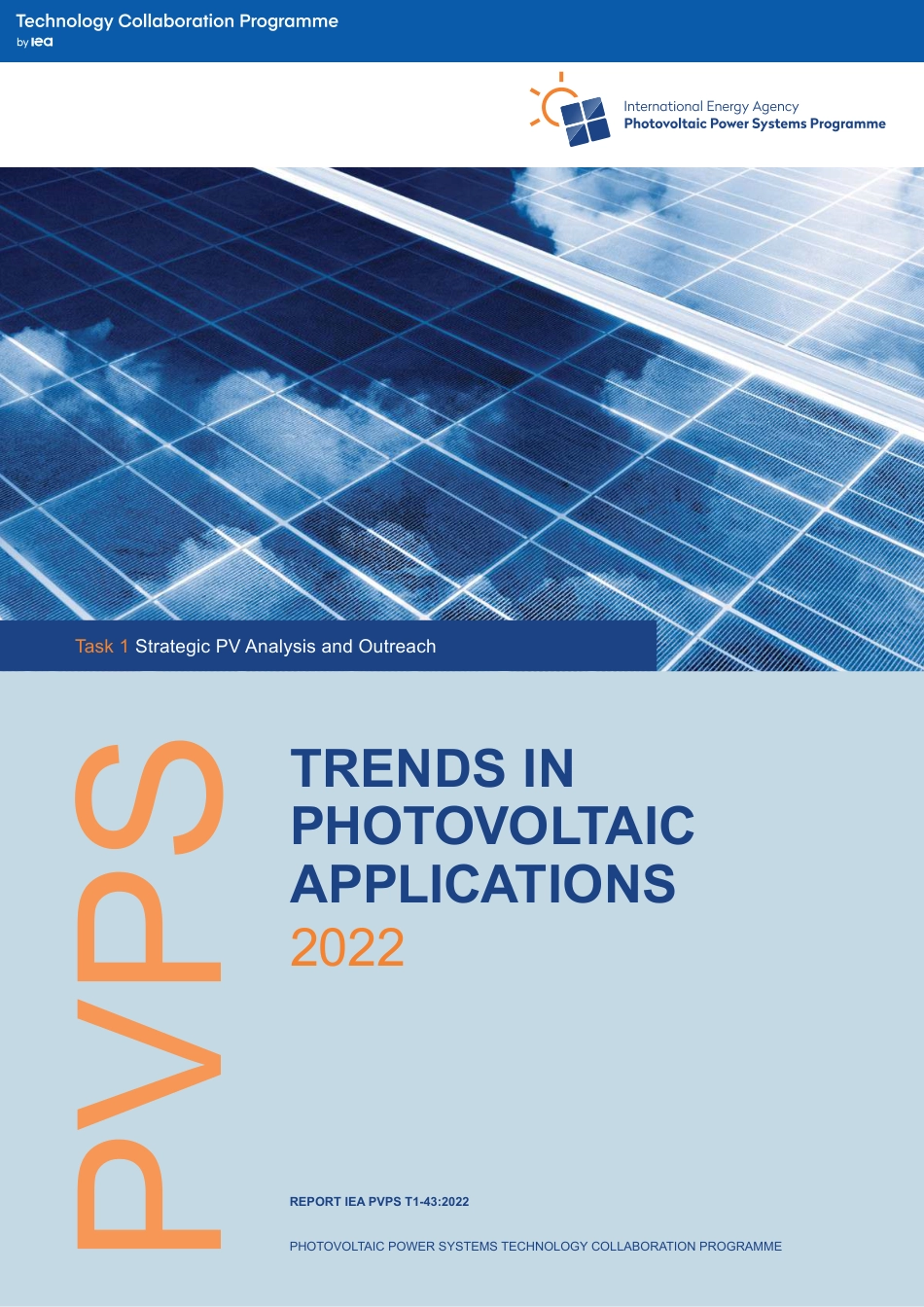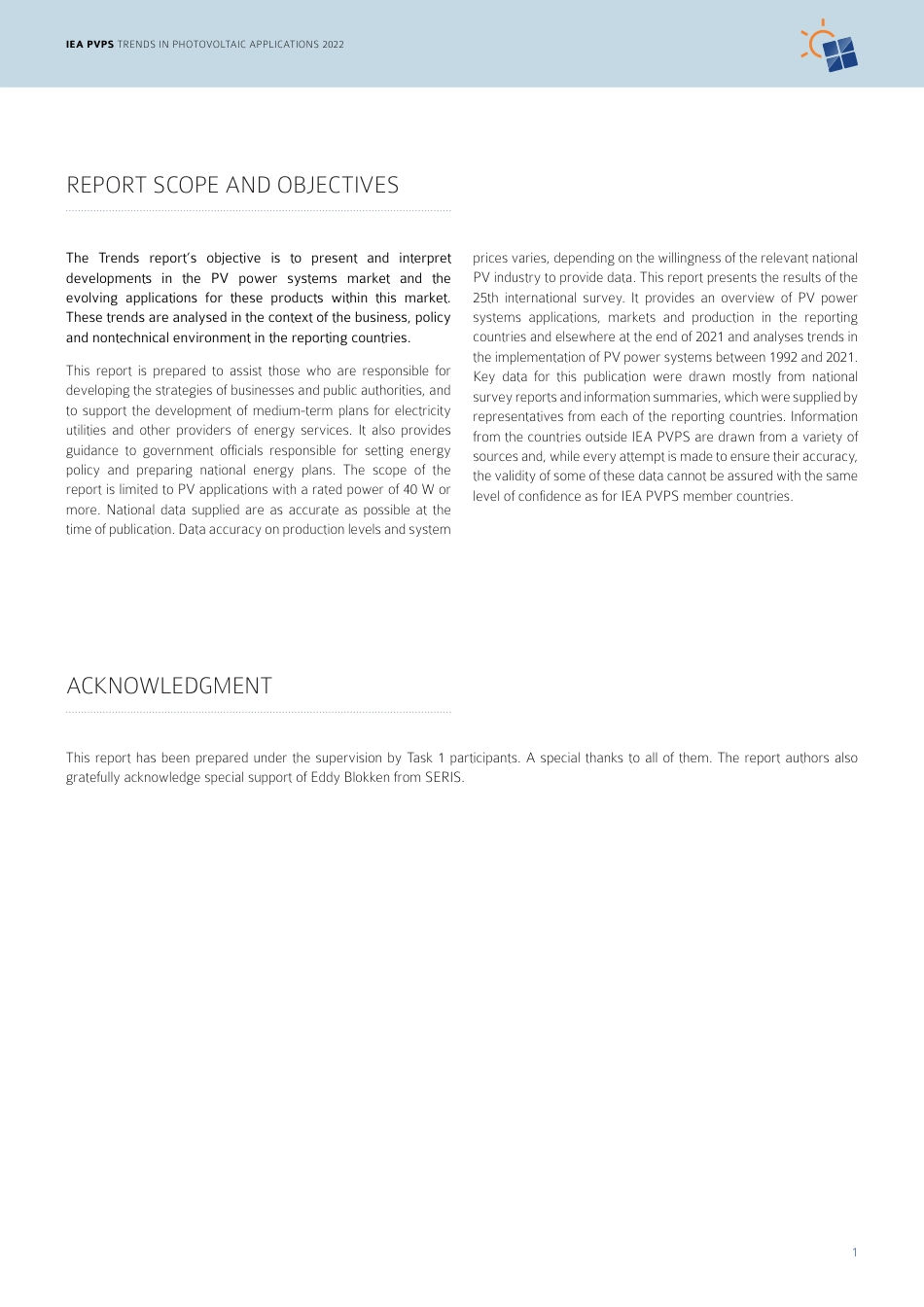Task 1 Strategic PV Analysis and OutreachPVPSTRENDS IN PHOTOVOLTAIC APPLICATIONS 2022REPORT IEA PVPS T1-43:2022PHOTOVOLTAIC POWER SYSTEMS TECHNOLOGY COLLABORATION PROGRAMME WHAT IS IEA PVPS TCP?The International Energy Agency (IEA), founded in 1974, is an autonomous body within the framework of the Organization for Economic Cooperation and Development (OECD). The Technology Collaboration Programme (TCP) was created with a belief that the future of energy security and sustainability starts with global collaboration. The programme is made up of thousands of experts across government, academia, and industry dedicated to advancing common research and the application of specific energy technologies.The IEA Photovoltaic Power Systems Programme (IEA PVPS) is one of the TCP’s within the IEA and was established in 1993. The mission of the programme is to “enhance the international collaborative efforts which facilitate the role of photovoltaic solar energy as a cornerstone in the transition to sustainable energy systems.” In order to achieve this, the Programme’s participants have undertaken a variety of joint research projects in PV power systems applications. The overall programme is headed by an Executive Committee, comprised of one delegate from each country or organisation member, which designates distinct ‘Tasks,’ that may be research projects or activity areas. This report has been prepared under Task 1, which deals with market and industry analysis, strategic research and facilitates the exchange and dissemination of information arising from the overall IEA PVPS Programme.The IEA PVPS participating countries are Australia, Austria, Canada, Chile, China, Denmark, Finland, France, Germany, Israel, Italy, Japan, Korea,...



